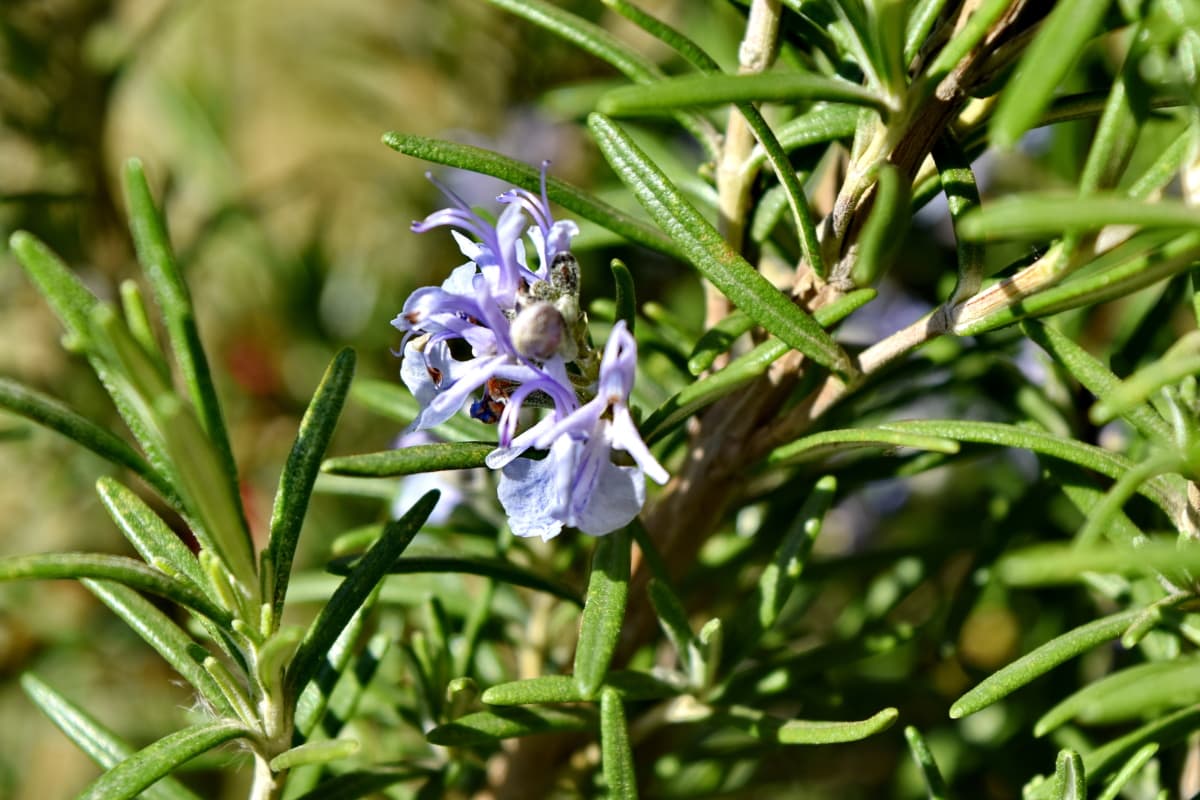
Rosemary is a shrubby plant characterized by its resistance to drought. Being originally from the Mediterranean region, the truth is that it has had no choice but to adapt to a very hot and dry summer, and an environmental humidity that remains high, above 50%, practically all year round.
In addition to all this, it is able to withstand frost. That is why it is one of the most widely cultivated plants, but it is also one of the ones that can most easily kill brown leaves. So let's see why rosemary dries up and what we can do to make it recover.
There are several reasons why our rosemary plant can dry out in a matter of little time. It is important to know all of them since this way it will be easier for us to discover what is the real problem that our horse has, and how it can be solved:
Lacks (natural) light
El romero It is very demanding of sunlight, not in vain in its places of origin it grows exposed to the sun directly. Since it is only a seedling, you must avoid the shade if you want to have a normal development, that is, vertically. If we put it in shade or semi-shade we will see that its leaves lose color and dry out.
To do? This has an easy solution: take it to a brighter area. But yes, you have to be careful because if you have never had the sun before you can burn. It is better to get used to it little by little, exposing it for an hour each day and increasing the exposure time by 1 hour as the weeks go by.
Is inside
Although this cause is usually related to the previous one, we also put it in case you have doubts about it. Rosemary is not a houseplant. It is very difficult for him to adapt to the conditions inside the house. Perhaps in an interior patio with a glass roof and windows it could do moderately well, but it would not grow as much as if it were outside.
So if we have it at home, what we will do is take it out. It resists frosts down to -12ºC, so we won't have to worry when temperatures drop.
The land is compact and poorly drained

Image - Flickr / Ferran Turmo Gort
The roots of the rosemary plant do not like the soil to be heavy and therefore compact. Air and water must be able to circulate without problems through the grains that compose it; this way it will be fine. When the soil is not adequate, the root system of the plant weakens.
What to do in these cases? The ideal is to prevent it from happening, planting it in universal cultivation substrates that carry perlite (on sale here), or in soils where puddles do not easily form. But if it has not been possible, then we would change the substrate for a better one if we have it in a pot, or we will remove it from the ground and mix the garden soil with perlite in equal parts before planting it again.
The pot has no holes
If we have it in a pot without holes, the water will stagnate inside and the roots will rot. Although these types of containers can be very beautiful, they are not practical for almost any type of plant: only aquatic plants can grow well in them.
The root system of rosemary is very sensitive to excess water, so If we want to have it in a pot we have to plant it in one that does have drainage holes.
Lack or excess of water
In general, rosemary needs little watering. It supports drought much better than excess water, so irrigation has to be moderate to low, avoiding going to extremes. And it is that if we let the earth be dry for a long time, or if, on the contrary, we pour water on it frequently, the leaves will dry out.
How to know if we are watering a little or a lot? Observing the symptoms you have. For example, if you are going thirsty, the leaves that will start to dry first will be the newest, the green stems will be drooping (as if hanging), and the soil will be dry; but if, on the other hand, it has a lot of water, the first leaves affected will be the oldest, that is, those that are lower, and in addition, verdina could begin to grow on the ground.
To recover the plant, if it is dry, what we will do is pour water on it. We can even put it in a container with water for about 30 minutes so that the substrate rehydrates.
If you have problems with overwatering, we will remove it from the pot and wrap the soil bread with absorbent paper, and the next day we will plant it again in one with new substrate. It will also be highly recommended to treat it with a fungicide, since it would not be uncommon for pathogenic fungi to try to harm it.
As you can see, there are many reasons why rosemary can dry out, but we trust that from now on you can recover it little by little.

